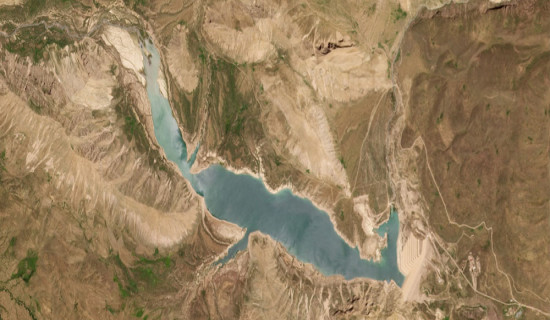- Thursday, 11 December 2025
Media Must Be Real Watchdog
Namrata Sharma
According to the World Press Freedom Index of 180 nations released by Reporters without Borders on the occasion of the World Press Freedom Day, 3rd May, India ranks 150th position out of 180 countries. It has actually slid down 8 places from its ranking of 142nd in last year. The same report places Nepal in the 76th position and shows that Nepal has actually climbed 30 steps up the ladder from its position of 106th.
However, the mainstream journalists in Nepal, gathered to interact during Himal Media Mela recently expressed their concerns related to press freedom in Nepal. Journalists from India and Nepal gave a message that the status of press freedom globally is not in a healthy position and Nepal is no exception. It was clear from the deliberations by veteran Nepali journalists that if democracy in our federal republic is to be kept intact, more needs to be done to ensure press freedom.
Lapdog
Ramon Magsaysay award winner Indian journalist Ravish Kumar of NDTV, who was invited during the occasion to deliver a keynote address, warned the Nepali journalists gathered that if caution was not taken, Nepal could head towards having a lapdog model that India now has. It is about the sensational and biased Indian print and TV news media which supports the ruling National Democratic Alliance (NDA) led by the Bharatiya Janata Party (BJP). The lapdog concept refers to television and other media that are perceived as mouthpieces of the ruling government there.
In this age where misinformation, disinformation and fake news are rampant, there are organised ways of swinging votes and spreading news that could mislead the general public. Unfortunately, it has been seen that this phenomenon has been widely practiced in countries like the USA and India which are seen as the oldest and biggest democratic countries. These are organised efforts of spreading information by political parties, corporate houses, and individuals to promote their parties, businesses and personal interests above the interest of the general public. Spreading fake news in this deliberate form is also used to spread hate news against different religions, communities and individuals.
It is a fact that all over the world the media has been controlled by the government, to some extent. However, with the freedom of press the private sector media blossomed. As time passed by these private sector media started becoming corporatised and owned and controlled by big corporate houses. The recent example of Elon Musk buying Twitter for US $44 billion shows how media’s financial stake is increasing and how it is now totally controlled by business tycoons. Twitter and Facebook are the most widely used social media in today’s world and have been verified as the most popular opinion makers and influencers. There is huge money involved which gives the media and its owners the power to control and swing opinions. This power is often used by politicians and corporate houses to spread and establish their corrupt agendas. According to an article by Debashish Roy Choudhary in the TIME magazine, India’s federal and provincial governments have enormous power over media corporations because of their “hefty state and party advertising budgets.” According to the article, the federal government alone spent about US$ 270,000 on advertisements every day in the 2019 to 2020 financial year. The access to power and business allows a say on what messages go out as different forms of advertisements. Choudhary mentions in his article that Modi and his government have used these leverages to turn “some of the biggest names in India’s news industry from barking watchdogs to obliging lapdogs.”
With the advent of the Modi-headed government in 2014, India saw a notable shift in the editorial leadership of major news organisations, especially the national level television networks. Most of the senior leaders with liberal viewpoints were seen to be removed from the editorial team and were replaced by those who became the mouthpieces of the government. India, which at one time was known to stand tall for its stance on democracy and its resourceful, free and unbiased media, is now beset with media that is trying to curry favour the NDA government to increase their TRP- Target Rating Point. With both the government and the corporate sector giving advertisements to these media who propagated news and views favourable to themselves rather than the public, the overall democracy in the country was at stake.
Polarisation
Ravish Kumar gave several examples of pressure being imposed on human rights organisations and civil rights groups. His argument is that the lapdog media has been used to intimidate and incarcerate independent journalists and activists and minority groups have been specifically targeted. One such example is the injustice over the Indian farmers who were protesting against the government policies related to the agriculture sector and farmers’ associations.
S. Y. Qureshi, former Election Commissioner of India writes in The Indian Express that hate and polarisation is rampant in India. The most worrying trend according to Qureshi is the government’s crackdown on freedom of speech with statistics showing 165 per cent increase in sedition cases between 2016 and 2019.
(Namrata Sharma is a journalist and women rights advocate namrata1964@yahoo.com Twitter handle: @NamrataSharmaP)









-original-thumb.jpg)






